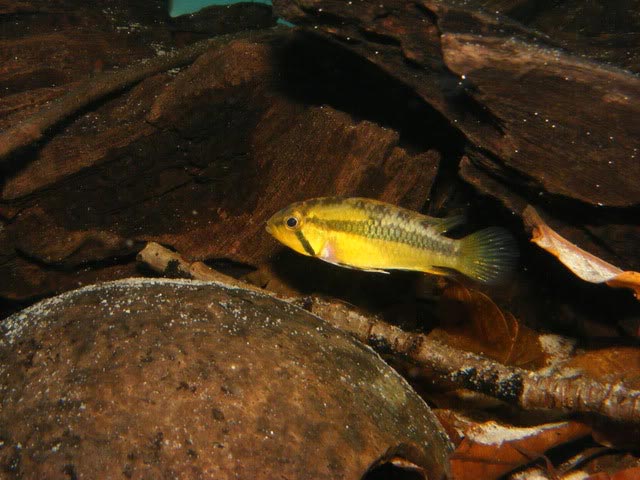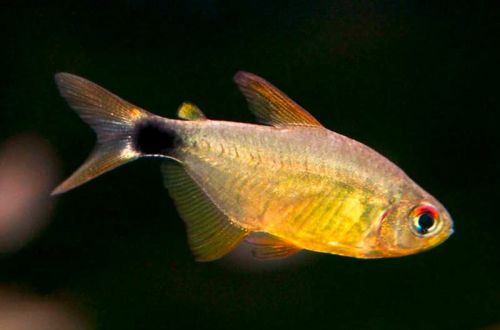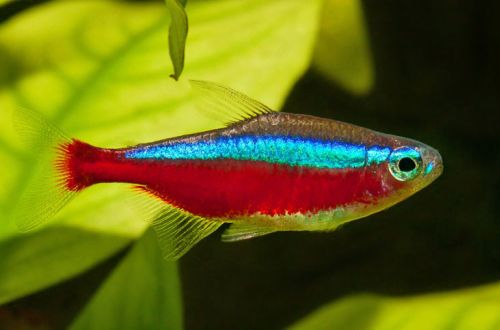
Apistogram Norberti
Apistogramma norberti, scientific name Apistogramma norberti, belongs to the Cichlidae family. An unpretentious bright fish that can get along with many freshwater fish from South America. The content will not cause much difficulty if the right conditions are provided.

Contents
Habitat
It comes from South America from the upper Amazon basin from the territory of Peru. The natural habitat is numerous streams and rivers flowing through the rainforest. The water level fluctuates depending on the season. During the rainy season, partial flooding of the coastline and forest areas occurs. The river bed is littered with numerous snags and fallen leaves. The water is colored in a tea shade due to the content of a large amount of tannins resulting from the decomposition of plant organic matter.
Brief information:
- The volume of the aquarium – from 40 liters.
- Temperature – 24-28°C
- Value pH — 4.5–6.5
- Water hardness – 0–3 GH
- Substrate type – sandy
- Lighting – subdued
- Brackish water – no
- Water movement is weak
- The size of the fish is 4–6 cm.
- Food – small sinking food from a variety of products
- Temperament – peaceful
- Keeping in a harem with one male and several females
Description

Adults reach a length of 4–6 cm. Males are larger, blue (back), pink and yellow shades predominate in color. The dorsal fin stretches from head to tail, the first rays of which are bright orange. During the mating season, the color becomes more intense.
Females are smaller and predominantly yellow in color. The body pattern depends on the season. It usually consists of a wide horizontal stripe and dark streaks on the upper body, ending with the dorsal fin. During the spawning period, the strip disappears and a large black spot appears in its place. The only element of the body pattern that is always preserved is the diagonal stripe on the head, passing through the eyes.
Food
Carnivorous species, in nature feeds on small invertebrates near the bottom. In a home aquarium, the diet should consist of protein-rich foods, such as live or frozen brine shrimp, daphnia, bloodworms, and dry sinking foods (flakes, pellets). The latter may well become the basis of the diet.
Maintenance and care, arrangement of the aquarium
The minimum size of an aquarium for one or two fish starts from 40 liters. Not demanding for registration. It can also be adapted to a half-empty tank. If breeding is planned, then several shelters will be required, ordinary ceramic pots, pieces of pipes, etc. will do.
However, Apistogramma Norberti will look most harmoniously among the design, reminiscent of the natural habitat. If possible, a sandy substrate, a few snags and thickets of plants, including floating ones, should be used. Secluded places are formed from snags and plants where fish could hide. The lighting is subdued, so shade-loving plant varieties are used. Fallen leaves of trees (beech, oak, Indian almond and others) are an indispensable element of decor. They serve not only as a decoration, but also contribute to the establishment of the composition of water, characteristic of natural reservoirs. In the process of decomposition, the leaves release tannins and thereby stain the water in a brownish color. Read more in the article “Which tree leaves can be used in an aquarium.”
Successful long-term maintenance depends on many factors. The most important of which is water quality. It is necessary to ensure that the hydrochemical parameters are within the acceptable range of values, and the concentrations of nitrogen cycle products do not exceed dangerous values (ammonia, nitrites, nitrates).
Behavior and Compatibility
They can live alone or in a group. During the spawning period, males can become aggressive towards relatives. It is recommended to maintain a group composition of one male and several females. Compatible with peaceful calm fish of comparable size.
Breeding / breeding
In favorable conditions, spawning occurs regularly. After a short courtship, the female occupies one of the shelters, where she lays eggs. Throughout the entire incubation period, she remains near the clutch and, after the appearance of fry, continues to protect them for some more time. The male does not take part in the protection of offspring and it is desirable to temporarily transplant him at the end of spawning.
Fish diseases
The main cause of diseases lies in the conditions of detention, if they go beyond the permissible range, then immunity suppression inevitably occurs and the fish becomes susceptible to various infections that are inevitably present in the environment. If the first suspicions arise that the fish is sick, the first step is to check the water parameters and the presence of dangerous concentrations of nitrogen cycle products. Restoration of normal/suitable conditions often promotes healing. However, in some cases, medical treatment is indispensable. Read more about symptoms and treatments in the Aquarium Fish Diseases section.





